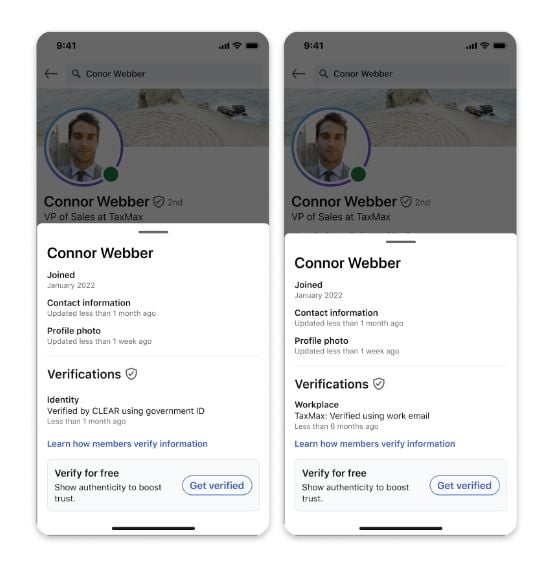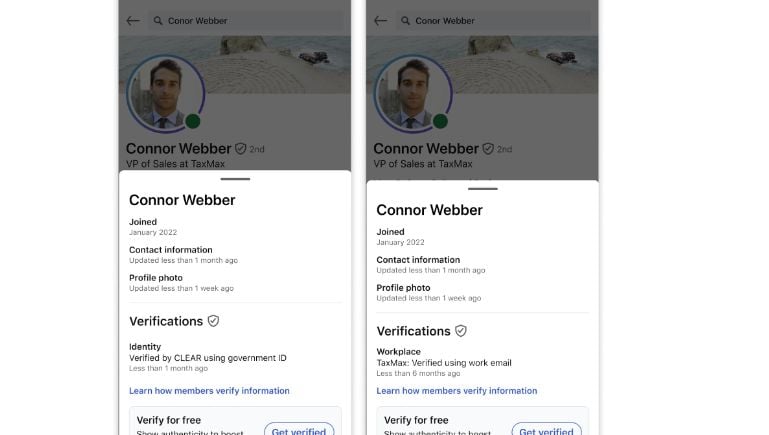LinkedIn has announced an update to its profile verification offering, which will now see LinkedIn working with more third-party verification partners to expand access to the option.
First launched back in April, in collaboration with identity platform CLEAR, LinkedIn’s verification process enables users to confirm their identity by providing their Government-assigned ID.
That then adds a verification badge to your profile, confirming that you are who you claim in the app.

As you can see in this example, LinkedIn’s verification process is free, but it does incorporate a third party for confirmation, which makes it slightly different to other platforms that have taken on the confirmation elements themselves.
(Or have largely abandoned them, in the case of X’s ‘X Premium’ process)
Initially, the option was only available to U.S. members, but LinkedIn has since expanded it to users in Canada and Mexico as well. And now LinkedIn’s looking to enable more users in more regions to confirm their identity.
For this, LinkedIn’s partnering with Microsoft Entra, Digilocker, and more, which will eventually enable it to expand verification to more regions.
The challenge in relying on third-party partners for this element is that it requires collaboration with local entities that are able to confirm ID documentation. Those partners also need to get paid, in some way, for their efforts, which could limit the capability to expand the offering to all regions.
But there is benefit to doing so, as it does add an extra level of credibility in the app.
According to LinkedIn, verified profiles get 60% more profile views, 50% more comments and reactions on their posts, and 30% more messages.
That extra mark of legitimacy does have clear value, which is why it’s good to see LinkedIn bringing it to more users.
In addition to this, LinkedIn’s also integrated verification into selected job postings, providing more confirmation and assurance in the app.
LinkedIn’s aim is to eventually have all members “verify at least one attribute of their professional identity”, with a view to confirming the ID of 100 million users by 2025.
Given that it’s free, and outsourced to third-party partners, this seems like a viable goal, and I would argue that this could do far more to combat bots in the app than X’s new approach, which is based around linking credit cards, and payments, to confirm user IDs.
It’s more work, but by collaborating with partners, LinkedIn could be on the right track to establishing a better solution for addressing bots and spam in the app. And with bot profiles set to become even harder to detect, as a result of evolving generative AI tools, this could be an important step in improving trust in the platform.



